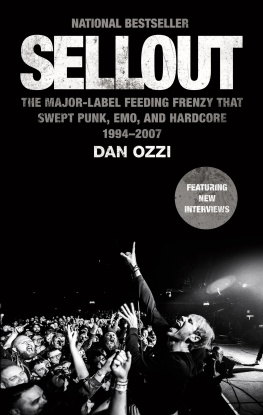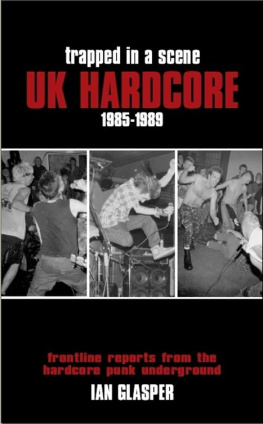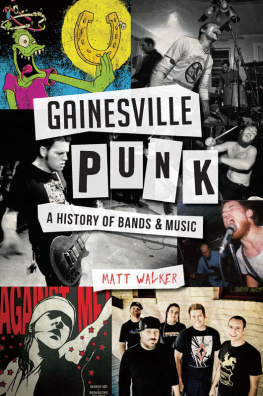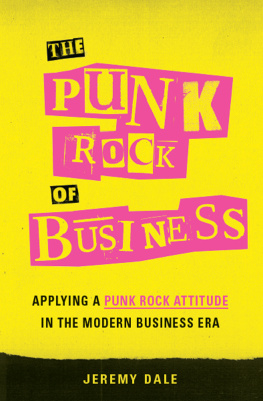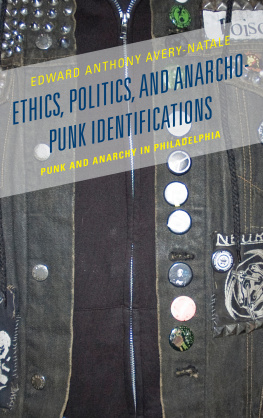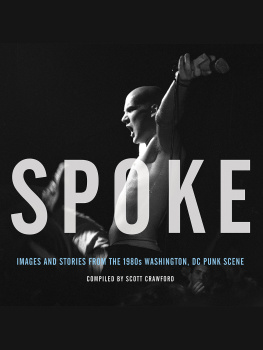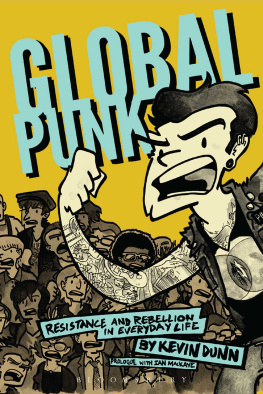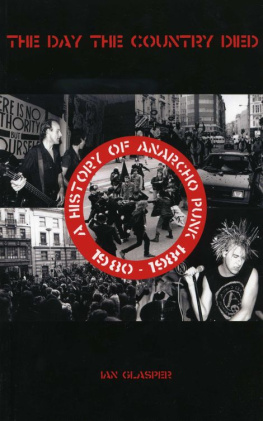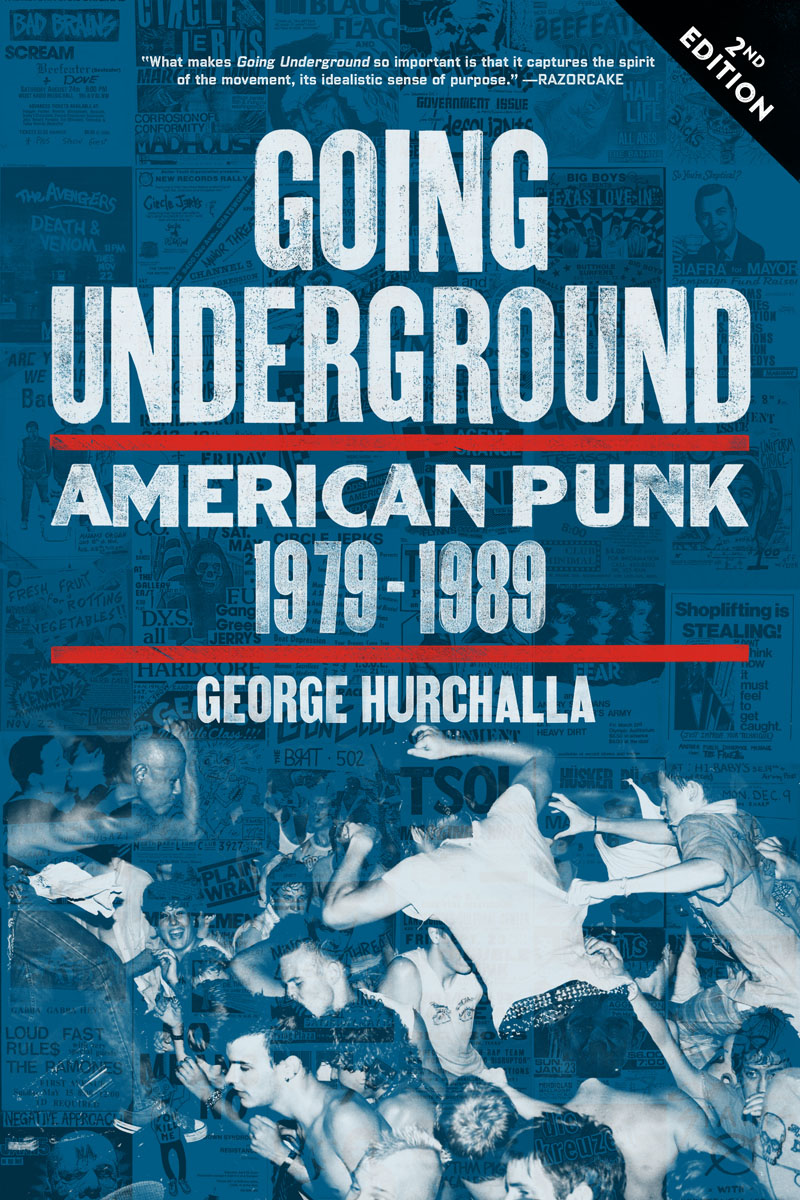
Praise
Hurchallas efforts are impressive, given the fragmented and regional nature of American hardcore in the Eighties, a time well before the Web made for a truly Punk Planet. Mimicking an Eighties-era tour, it meanders all over the place without ever fully wearing out its welcome.
Marc Savlov, Austin Chronicle
Chapter by chapter, Hurchalla captures each major citys contribution, with the formation and rise of seminal clubs, bands, and indie record labels, all told through the anecdotes of the musicians, club promoters, zine publishers, and scenesters themselves. Peppered with original show flyers and rare photographs, this anthropological perfect storm might leave latter-day punks thirsty at the trough, as baby, those were truly the golden years.
John James, Cincinnati CityBeat
What makes Hurchallas book so important is that it captures the spirit of the movement, its idealistic sense of purpose that, despite punks many shortcomings, has managed to survive and continues to influence a wide swath of people. Going Underground now stands as the definitive statement on the history of Americas punk/hardcore scene. George, I tip my worn-out beret to you.
Jimmy Alvarado, Razorcake
Drawn in large part from zines of the times, every page brings another memory. Naked Raygun on one, countered by Black Flag or the Butthole Surfers on the next. This isnt some prettied-up, big publisher look at ancient history, but rather like the music it documents, its a raw and passionate take on a revolution of sorts. This music never died, but it did get co-opted, yet Hurchalla steers clear of all that, and just records what matters. Good stuff!
James Mann, Big Takeover
Punk is an integrated part of American culture now, but it hasnt always been that way. Hurchallas book serves as a window into a time and place where punk meant something completely different. Celebrities didnt have Mohawks and people didnt always think you were cool for dressing totally punk. But it was an independent movement where people were taking complete control over their music and culture.
Encore Weekly, Wilmington, NC
Going Underground: American Punk 19791989, Second Edition
George Hurchalla 2016
This edition published in 2016 by PM Press
ISBN: 978-1-62963-113-4
Library of Congress Control Number: 2015930937
Cover: John Yates/Stealworks.com
Layout: Jonathan Rowland
PM Press
P.O. Box 23912
Oakland, CA 94623
10 9 8 7 6 5 4 3 2 1
Printed in the USA by the Employee Owners of Thomson-Shore in Dexter, Michigan
www.thomsonshore.com
Contents
For Dixon, Biscuit, Gerf, Jack the Mountain, and all the other punks whose journey ended too quickly
Acknowledgments
I WOULD LIKE TO MAKE a special point of thanking the following photographers for making the wealth of photographs in this book possible, and also for the information they provided. Extra special kudos to Marie for use of her Chicago flyer collection and encouragement throughout the process, Justina, Brian, Malcolm, and Ed for their extraordinary generosity, and the late and sorely missed Dixon for all his help in opening my eyes to the coolness that was Austin.
Marie Kanger-Born (www.chicagopunkpix.com)
Dixon Coulbourn (www.wedigdixon.com)
Justina Davies (www.whatawaytodie.com)
Malcolm Riviera (www.8trackheaven.com)
Ed Arnaud (www.shavedneck.com)
Geoff Cordner (www.punkerotic.com)
Trent Nelson (www.trenthead.com)
I am also indebted to Paul Hilcoff for use of his Hsker D database (www.thirdav.com), James Sinks for the bounty of obscure zine interviews he has made available on dementlieu.com and 30underDC.com, Bill Cuevas (www.shavedneck.com) for all the Arizona material, Bob Suren for his help with Florida, Sarah Kuhl for the Jockey Club shots, Dave Brown for the Safari Club photos, Phillip Fuller for the Lehigh Valley shots, Scott Pellet of the Big Boys website (soundonsound.org) for the flyers and wealth of info on the band, Scoot Horton for sharing some NY interviews, and Maximum RocknRoll, Forced Exposure, Big Takeover, and Flipside for their kindness in letting me quote a substantial amount of material from their zines. The Razorcake crew (razorcake.org) gets a big shout for all their ongoing great work, in particular Jimmy Alvarado for his help with the history of punk in East LA.
Thanks to the entire 1980s Philly crew for making it such a great scene to be a part of, Richard Shelter for making south Florida punk happen, and punks everywhere who had the gumption to do and create something on their own dime. Last but certainly not least, a huge thanks to Jason Willis, a human punk encyclopedia whose willingness to engage in endless punk banter has been illuminating and indispensable.
Preface
L IKE A LOT OF PUNK ROCK , the idea for writing this book came out of boredom. The story of the 80s punk underground was conspicuously absent from the mainstream alternative music culture of the 90s that it influenced so much. What little I had seen written was largely disappointing. I was living a snow bum life in the mountains of Tahoe, working menial seasonal jobs, and in the summer of 1998 I found myself working as a gatehouse security guard for a townhouse development in the middle of the night. It was the kind of ridiculous job that if Id been younger and had punk friends around, they would have come around every night just to mock and harass me. Without even that type of annoying comic relief to break up the dull shifts, I had to come up with something to pass the time. Writing a book seemed as good a plan as any.
I brought my old little Mac desktop into the gatehouse every night and started dredging up the memories. Eventually, I got so into writing that I ceased paying any attention to the job, and anyone who came to the gate I would just wave through without checking to see if they had a pass or not. By the end of the summer, I had most of my memories written down and the skeleton of this book in place. Though everyone thinks they have a story to tell, I soon began to figure out that my story alone really wasnt much of one. The problem was, as something of a nomad and loner, I had never gotten to know many people from the punk scenes I was involved in. On top of that, I had no idea how to find anyone. Only so many people were on the Internet at that point, and I found very little in the way of any online punk social networking.
But what I did have soon were lots of zines. A photographer friend who was part of the early DC scene loaned me her entire zine collection of old issues of Flipside, Maximum RocknRoll (MRR), OP, Decline of Art, Forced Exposure, and more. This was a goldmine, the true guts of the book that helped fill out details far beyond my personal knowledge. Ultimately, I was a little cynical about oral history too far removed from when it happened. A large amount of it started to get invented in peoples heads. I found it was true in mine: memories blurred and confused. Zines were the only documentation of punk rock as it was happening, so peoples thoughts seemed fresh and raw, uncluttered by the fog of time. I wanted to write an accurate document of the era, not just another entertaining oral history of unchallenged errant memories.
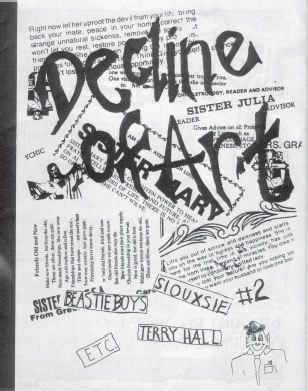
The DC photographer friend introduced me to John Stabb, legendary frontman of Government Issue, and set up an interview with him at her apartment. It was one of my first in-depth personal interviews, shortly followed by one with Marginal Man guitarist Kenny Inouye. Layer after layer of punk rock history began peeling back. I continued making more contacts and doing more illuminating interviews, with Jack Rabid of
Next page


